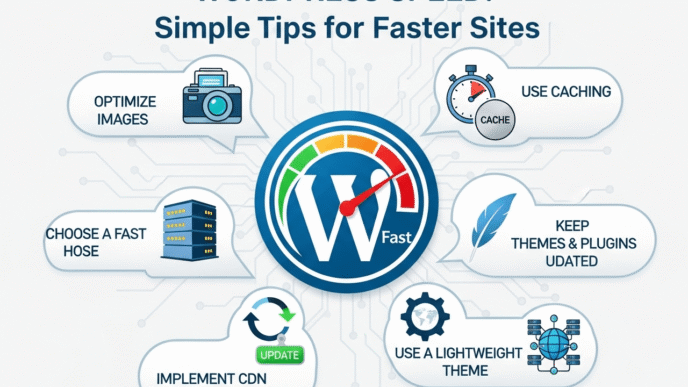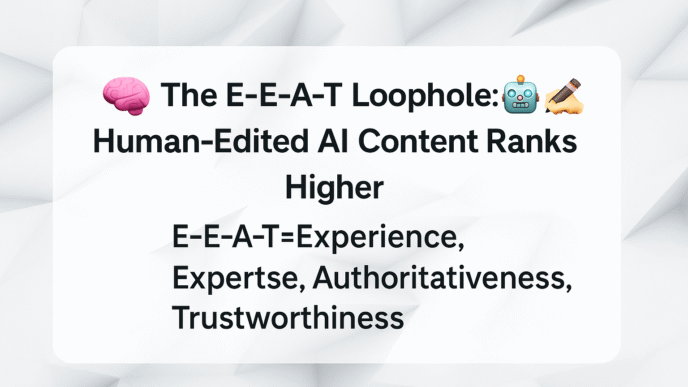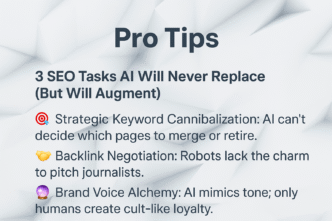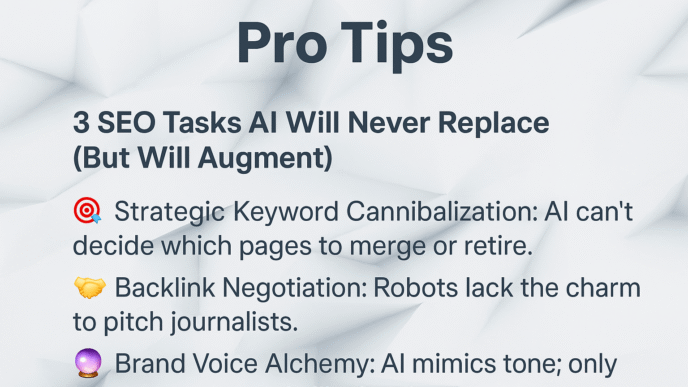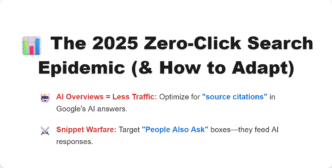Your website looks absolutely stunning on your 27-inch desktop monitor. Colors are crisp, animations are smooth, and everything loads in the blink of an eye. Then you check it on your phone and… well, let’s just say it’s about as fast as a sloth doing yoga.
Welcome to the frustrating reality of mobile Core Web Vitals, where your desktop performance crown means absolutely nothing if your mobile experience is terrible. Here’s the kicker: over 60% of web traffic now comes from mobile devices, and Google prioritizes mobile performance for rankings.
Mobile performance isn’t just about making your site “mobile-friendly” anymore – it’s about creating blazing-fast experiences that work flawlessly on everything from the latest iPhone to budget Android devices with spotty 3G connections. Ready to master mobile optimization and turn every device into a performance powerhouse?
Table of Contents
Toggle
Why Are Mobile Core Web Vitals Different from Desktop?
Mobile Core Web Vitals present unique challenges that desktop optimization simply doesn’t prepare you for. It’s like training for a marathon on a treadmill and then running the actual race through a muddy obstacle course.
Mobile devices have fundamental limitations that affect Core Web Vitals performance:
- Processing power: Even flagship phones have less CPU power than basic laptops
- Memory constraints: Limited RAM affects how browsers handle complex pages
- Network variability: From 5G to edge-case 2G connections
- Screen real estate: Smaller screens mean different interaction patterns
- Touch interfaces: Different input methods affect user behavior
Mobile web vitals are typically 20-50% worse than desktop scores on the same website. That’s not a bug – it’s the reality of mobile constraints.
Pro Tip: Google uses mobile-first indexing, meaning your mobile Core Web Vitals scores are more important for rankings than desktop scores. If you can only optimize one version, make it mobile.
What Makes Mobile Performance Optimization So Challenging?
Mobile speed optimization is like solving a puzzle where the pieces keep changing shape. Here are the biggest challenges you’ll face:
Network Connectivity Issues
Mobile users deal with:
- Variable connection speeds (5G to 2G)
- Data plan limitations affecting user behavior
- Network switching between WiFi and cellular
- Geographic performance variations
Device Hardware Limitations
Mobile devices struggle with:
- CPU throttling to preserve battery life
- Memory pressure causing browser tab refreshes
- Storage limitations affecting caching
- Graphics processing constraints for animations
Touch Interface Considerations
Mobile interactions are different:
- Larger touch targets needed for usability
- Scroll behavior affecting layout shifts
- Viewport changes during orientation switches
- Virtual keyboard appearance affecting layout
Pro Tip: The biggest mistake is optimizing for “average” mobile performance. Test on older, slower devices with poor network connections – that’s where you’ll find your real performance bottlenecks.
How to Optimize Core Web Vitals for Mobile: The Complete Strategy
Ready to master optimize Core Web Vitals for mobile? Here’s your comprehensive battle plan:
1. Mobile-First Image Optimization
Images are the #1 mobile performance killer. Here’s how to fix them:
Responsive Image Implementation:
<picture>
<source media="(max-width: 480px)" srcset="hero-mobile.webp">
<source media="(max-width: 768px)" srcset="hero-tablet.webp">
<img src="hero-desktop.webp" alt="Hero image" loading="lazy">
</picture>
Image Optimization Checklist:
- Use WebP format (90% smaller than JPEG on mobile)
- Implement responsive images with multiple breakpoints
- Compress aggressively (mobile users are more tolerant of slight quality loss)
- Use lazy loading for everything below the fold
- Optimize for retina displays without over-serving
2. Critical CSS for Mobile Devices
Mobile user experience demands instant above-the-fold rendering:
/* Critical mobile CSS example */
@media (max-width: 768px) {
.hero {
background-image: none; /* Remove heavy background images */
height: 50vh; /* Reduce height for mobile */
}
.navigation {
transform: translateX(-100%); /* Hide off-canvas by default */
}
}
Mobile CSS Strategy:
- Inline critical CSS for above-the-fold content
- Defer non-critical styles until after page load
- Use media queries to serve mobile-specific optimizations
- Minimize CSS blocking with async loading
3. JavaScript Optimization for Mobile
Mobile browsers are less forgiving of heavy JavaScript:
// Smart JavaScript loading for mobile
if (window.innerWidth <= 768) {
// Load minimal mobile-specific scripts
import('./mobile-only-features.js');
} else {
// Load full desktop experience
import('./desktop-features.js');
}
// Debounce scroll events for better mobile performance
let scrollTimeout;
window.addEventListener('scroll', () => {
clearTimeout(scrollTimeout);
scrollTimeout = setTimeout(handleScroll, 16); // ~60fps
});
Mobile Performance Optimization Techniques That Actually Work
Here are proven mobile performance optimization techniques that deliver real results:
| Technique | Impact Level | Implementation | Mobile Benefit | Difficulty |
|---|---|---|---|---|
| Image optimization | High | Easy | 40-60% LCP improvement | Easy |
| Critical CSS inlining | High | Medium | 30-50% faster rendering | Medium |
| JavaScript reduction | Medium | Hard | 20-40% FID improvement | Hard |
| Font optimization | Medium | Easy | 15-25% CLS reduction | Easy |
| Service workers | High | Hard | 50-80% repeat visit improvement | Hard |
| Preloading | Medium | Easy | 10-20% overall improvement | Easy |
Advanced Mobile Optimization Strategies:
1. Adaptive Loading Based on Network:
// Detect network quality and adapt
const connection = navigator.connection || navigator.mozConnection || navigator.webkitConnection;
if (connection && connection.effectiveType === 'slow-2g') {
// Load minimal experience
loadMinimalVersion();
} else if (connection && connection.effectiveType === '4g') {
// Load full experience
loadFullExperience();
}
2. Mobile-Specific Lazy Loading:
// More aggressive lazy loading for mobile
const observerOptions = {
rootMargin: window.innerWidth <= 768 ? '50px' : '200px'
};
const imageObserver = new IntersectionObserver((entries) => {
entries.forEach(entry => {
if (entry.isIntersecting) {
loadImage(entry.target);
}
});
}, observerOptions);
Improve Mobile Core Web Vitals Scores: Device-Specific Strategies
Different devices require different mobile site speed optimization approaches:
For Budget Android Devices (2-4GB RAM)
- Aggressive image compression (WebP at 70% quality)
- Minimal JavaScript frameworks (vanilla JS preferred)
- Simple animations (CSS transforms only)
- Conservative caching strategies
For Mid-Range Smartphones (4-6GB RAM)
- Balanced optimization approach
- Progressive enhancement for advanced features
- Smart preloading based on user behavior
- Moderate animation complexity
For Flagship Devices (6GB+ RAM)
- Enhanced experiences with premium features
- Advanced caching strategies
- Complex animations and interactions
- Predictive preloading of content
Pro Tip: Use device detection (carefully) to serve appropriate experiences. A flagship iPhone can handle animations that would crash a budget Android device.
Real-World Case Study: E-commerce Mobile Transformation
Let me share an incredible mobile optimization success story:
The Challenge: A fashion e-commerce site with great desktop performance but terrible mobile Core Web Vitals affecting mobile sales.
Initial Mobile Performance:
- LCP: 6.2 seconds (Poor)
- FID: 450ms (Poor)
- CLS: 0.28 (Poor)
- Mobile bounce rate: 68%
- Mobile conversion rate: 0.8%
- Mobile traffic: 72% of total visits
Problems Identified:
- Massive product images (3-5MB each) not optimized for mobile
- Desktop-first CSS loading unnecessary styles on mobile
- Heavy JavaScript framework designed for desktop interactions
- Third-party widgets not optimized for mobile performance
- No progressive enhancement strategy
The Mobile-First Optimization Strategy:
Week 1: Image Revolution
- Converted all images to WebP with mobile-specific compression
- Implemented responsive images with 4 breakpoints
- Added aggressive lazy loading (within 50px of viewport)
- Optimized product gallery for touch interaction
Results after Week 1:
- LCP: 3.8 seconds (38% improvement)
- Mobile page weight: Reduced from 4.2MB to 1.8MB
Week 2: CSS and Layout Optimization
- Created mobile-first CSS architecture
- Inlined critical CSS for above-the-fold content
- Eliminated layout shifts in product listings
- Optimized checkout flow for mobile UX
Results after Week 2:
- LCP: 2.9 seconds (53% improvement from baseline)
- CLS: 0.09 (68% improvement)
Week 3: JavaScript and Interaction Optimization
- Replaced heavy framework with lightweight mobile-optimized scripts
- Implemented smart loading based on device capabilities
- Optimized touch interactions and gesture handling
- Added service worker for offline functionality
Results after Week 3:
- LCP: 2.1 seconds (66% improvement)
- FID: 85ms (81% improvement)
- Mobile bounce rate: 45% (34% improvement)
Week 4: Progressive Enhancement and Monitoring
- Implemented progressive enhancement for advanced features
- Set up mobile-specific monitoring and alerts
- A/B tested different optimization approaches
- Fine-tuned performance for different device categories
Final Mobile Results After 1 Month:
- LCP: 1.9 seconds (Good – 69% improvement)
- FID: 75ms (Good – 83% improvement)
- CLS: 0.06 (Good – 79% improvement)
- Mobile bounce rate: 38% (44% improvement)
- Mobile conversion rate: 2.1% (163% improvement)
- Mobile revenue: 85% increase month-over-month
The Business Impact:
- Total revenue increase: 42% (mobile drove overall growth)
- Mobile session duration: 156% increase
- Return mobile visitors: 89% increase
- Mobile SEO rankings: Average +12 position improvements
Pro Tip: The biggest revelation was that mobile optimization didn’t just improve mobile performance – it forced them to question every aspect of their site, leading to better desktop performance too.
Responsive Design Core Web Vitals: Best Practices
Responsive design Core Web Vitals optimization requires thinking beyond traditional responsive design:
Mobile-First Breakpoint Strategy
/* Mobile-first approach */
.container {
/* Mobile styles (default) */
padding: 1rem;
font-size: 14px;
}
@media (min-width: 768px) {
.container {
/* Tablet enhancements */
padding: 2rem;
font-size: 16px;
}
}
@media (min-width: 1024px) {
.container {
/* Desktop enhancements */
padding: 3rem;
font-size: 18px;
}
}
Touch-Optimized Interactions
/* Touch-friendly button sizing */
.mobile-button {
min-height: 44px; /* iOS recommended minimum */
min-width: 44px;
padding: 12px 24px;
margin: 8px; /* Prevent accidental taps */
}
/* Remove hover effects on touch devices */
@media (hover: none) {
.button:hover {
/* Disable hover effects */
transform: none;
}
}
Viewport Optimization
<!-- Optimal viewport configuration -->
<meta name="viewport" content="width=device-width, initial-scale=1, viewport-fit=cover">
Mobile SEO and Core Web Vitals: The Connection
Mobile SEO and Core Web Vitals are inseparable in 2025. Here’s how they work together:
Google’s Mobile-First Indexing Impact
- Mobile Core Web Vitals scores directly affect rankings
- Desktop performance is secondary to mobile performance
- Mobile usability signals are stronger ranking factors
- Page experience updates prioritize mobile metrics
Mobile-Specific SEO Optimizations
<!-- Mobile-optimized structured data -->
<script type="application/ld+json">
{
"@context": "https://schema.org",
"@type": "Organization",
"name": "Mobile Optimized Business",
"url": "https://example.com",
"potentialAction": {
"@type": "SearchAction",
"target": "https://example.com/search?q={search_term_string}",
"query-input": "required name=search_term_string"
}
}
</script>
Device Optimization: Testing Across the Mobile Spectrum
Device optimization requires testing on real devices, not just browser emulation:
| Device Category | Test Devices | Focus Areas | Performance Targets |
|---|---|---|---|
| Budget Android | Samsung Galaxy A12, Nokia 3.4 | Basic functionality, core features | LCP < 3s, FID < 200ms |
| Mid-Range | iPhone SE, Pixel 4a | Enhanced features, smooth interactions | LCP < 2.5s, FID < 150ms |
| Flagship | iPhone 14, Samsung S23 | Premium experience, advanced features | LCP < 2s, FID < 100ms |
| Tablets | iPad, Samsung Tab | Larger screen optimizations | Desktop-like performance |
Mobile Testing Workflow
- Emulation testing in Chrome DevTools (initial development)
- Real device testing on physical devices (validation)
- Network throttling testing (2G, 3G, slow 4G)
- Battery impact testing (performance under low battery)
- Memory pressure testing (performance with limited RAM)
Pro Tip: Don’t just test on the latest devices. The majority of your mobile users are probably on 2-3 year old devices with limited processing power and memory.
Mobile Core Web Vitals Tools and Monitoring
Here are the essential tools for mobile web vitals monitoring:
| Tool | Mobile Testing | Real Device Data | Network Simulation | Best For |
|---|---|---|---|---|
| Chrome DevTools | ✅ Excellent | ❌ Emulation only | ✅ Excellent | Development debugging |
| PageSpeed Insights | ✅ Good | ✅ Field data | ✅ Standard | Quick mobile assessment |
| WebPageTest | ✅ Excellent | ✅ Real devices | ✅ Advanced | Comprehensive testing |
| Real Device Cloud | ✅ Perfect | ✅ Real devices | ✅ Real networks | Production validation |
| Search Console | ✅ Good | ✅ Real users | ✅ Real conditions | Long-term monitoring |
Mobile Monitoring Setup
// Custom mobile performance monitoring
function trackMobilePerformance() {
// Only track on mobile devices
if (window.innerWidth <= 768) {
// Track mobile-specific metrics
new PerformanceObserver((list) => {
list.getEntries().forEach((entry) => {
if (entry.entryType === 'largest-contentful-paint') {
// Send mobile LCP data
analytics.track('mobile_lcp', {
value: entry.startTime,
device_type: getDeviceType(),
connection_type: getConnectionType()
});
}
});
}).observe({entryTypes: ['largest-contentful-paint']});
}
}
Common Mobile Optimization Mistakes to Avoid
Learn from these frequent mobile performance pitfalls:
Mistake 1: Desktop-First Thinking
The Problem: Designing for desktop and then “making it work” on mobile. The Solution: Start with mobile constraints and enhance for larger screens.
Mistake 2: Ignoring Network Variability
The Problem: Only testing on fast WiFi connections. The Solution: Test on throttled networks and implement adaptive loading.
Mistake 3: One-Size-Fits-All Approach
The Problem: Serving the same experience to all mobile devices. The Solution: Use progressive enhancement based on device capabilities.
Mistake 4: Overlooking Touch Interactions
The Problem: Not optimizing for touch-specific interaction patterns. The Solution: Design for touch-first with appropriate sizing and spacing.
Pro Tip: The biggest mobile performance gains often come from removing features rather than optimizing them. Question whether every desktop feature needs to exist on mobile.
The Future of Mobile Core Web Vitals
Mobile performance optimization is evolving rapidly:
Emerging Technologies
- 5G networks enabling richer mobile experiences
- Edge computing bringing processing closer to users
- WebAssembly for near-native mobile performance
- Progressive Web Apps blurring the line between web and native
New Metrics and Standards
- Interaction to Next Paint (INP) replacing FID
- Mobile-specific Core Web Vitals thresholds
- Battery impact considerations in performance metrics
- Accessibility performance metrics for mobile
Browser Improvements
- Better mobile caching strategies
- Improved JavaScript engines for mobile devices
- Native lazy loading enhancements
- Automatic optimization features
Your Mobile Core Web Vitals Action Plan
Ready to master mobile optimization? Here’s your systematic approach:
Week 1: Mobile Audit and Foundation
- Test current mobile performance across different devices
- Identify biggest mobile bottlenecks using real device testing
- Set up mobile-specific monitoring and alerting
- Establish mobile performance baselines for tracking
Week 2: Image and Media Optimization
- Implement responsive images with mobile breakpoints
- Convert images to WebP with aggressive mobile compression
- Add smart lazy loading optimized for mobile viewports
- Optimize video content for mobile consumption
Week 3: Code and Content Optimization
- Create mobile-first CSS architecture
- Implement critical CSS inlining for mobile
- Optimize JavaScript for mobile device constraints
- Remove non-essential features on mobile
Week 4: Advanced Mobile Features
- Implement progressive enhancement strategies
- Add service worker for offline functionality
- Set up adaptive loading based on device/network
- Fine-tune performance for different device categories
Remember, mobile Core Web Vitals optimization is about understanding and respecting the unique constraints and opportunities of mobile devices. It’s not about doing less – it’s about doing different, and often doing better.
The mobile web is where your users are, and increasingly, it’s where your revenue comes from. Investing in mobile performance isn’t just about better Core Web Vitals scores – it’s about creating experiences that work beautifully for everyone, everywhere.
Want to understand how mobile optimization fits into your overall Core Web Vitals strategy? Mobile-first thinking can actually improve your desktop performance too.
What’s your biggest mobile performance challenge? Share your mobile optimization struggles in the comments – let’s solve them together!




